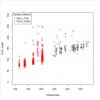We Need You! Derby Doubles As Research
Many anglers talk about the epic search for MONSTER Chinook. This summer the Pacific Salmon Foundation is flipping the script with a derby focused on baby Chinook, and we’re inviting B.C. anglers to participate. “Why would I do that?” you may ask. For salmon conservation and science of course!
Many readers may be aware of the Pacific Salmon Foundation’s major research program the Salish Sea Marine Survival Project http://www.mailoutinteractive.com/I...&r=673525&qz=bf0ac109607e1e27b2af5b9a50af1cba developed in partnership with Long Live the Kings in Seattle, Washington. The goal of this project is to understand what is limiting production of salmon in local marine waters with Canadian efforts focused on the Strait of Georgia. One of the key questions is: where and when does most of the mortality occur? The prevailing idea is that mortality is highest early in the first year of life within marine waters such as the Strait of Georgia and Puget Sound. But to be honest, this remains a critical hypothesis that still needs to be tested and validated. That’s why we’re reaching out to BC anglers to help us answer this question. Read more about how you can help here on the salmon blog, http://www.mailoutinteractive.com/I...&r=673525&qz=f8feffdf735adfd535081e93e84b82cc or contact Elayne Sun at esun@psf.ca to get involved
Many anglers talk about the epic search for MONSTER Chinook. This summer the Pacific Salmon Foundation is flipping the script with a derby focused on baby Chinook, and we’re inviting B.C. anglers to participate. “Why would I do that?” you may ask. For salmon conservation and science of course!
Many readers may be aware of the Pacific Salmon Foundation’s major research program the Salish Sea Marine Survival Project http://www.mailoutinteractive.com/I...&r=673525&qz=bf0ac109607e1e27b2af5b9a50af1cba developed in partnership with Long Live the Kings in Seattle, Washington. The goal of this project is to understand what is limiting production of salmon in local marine waters with Canadian efforts focused on the Strait of Georgia. One of the key questions is: where and when does most of the mortality occur? The prevailing idea is that mortality is highest early in the first year of life within marine waters such as the Strait of Georgia and Puget Sound. But to be honest, this remains a critical hypothesis that still needs to be tested and validated. That’s why we’re reaching out to BC anglers to help us answer this question. Read more about how you can help here on the salmon blog, http://www.mailoutinteractive.com/I...&r=673525&qz=f8feffdf735adfd535081e93e84b82cc or contact Elayne Sun at esun@psf.ca to get involved



